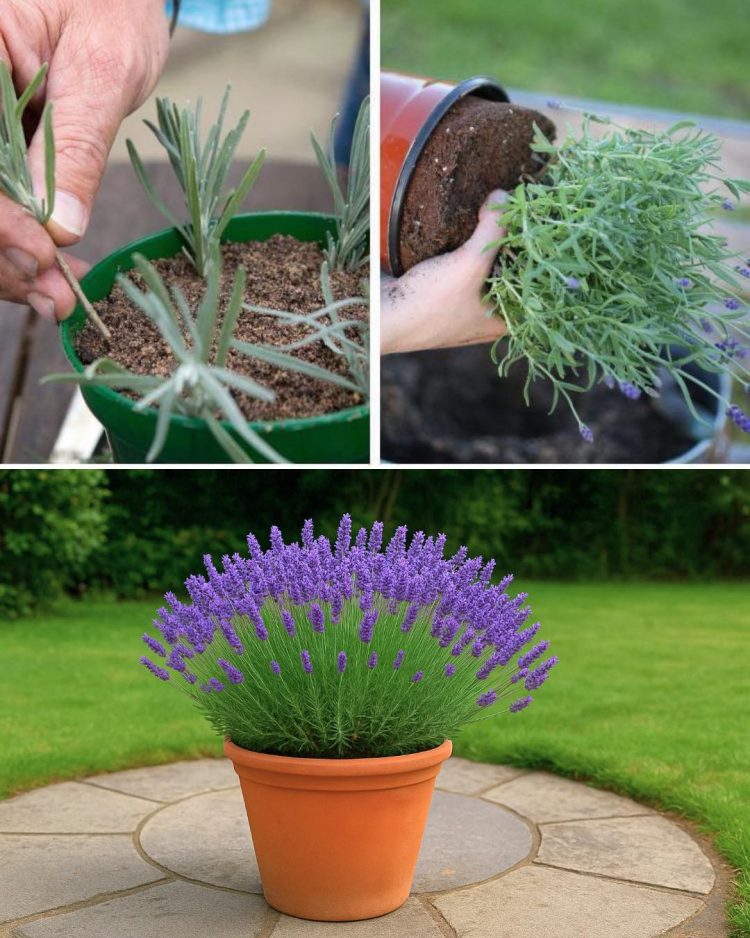Why Propagate Lavender from Cuttings?
Growing lavender from seeds can take a long time and often produces weaker plants.
Propagating from cuttings is:
Faster – Lavender cuttings root in 2-4 weeks, while seeds can take months.
Reliable – Cuttings produce stronger, healthier plants identical to the parent plant.
Cost-Effective – Grow more lavender for free instead of buying new plants.
What You Need to Propagate Lavender Cuttings
Before starting, gather these materials:
A Healthy Lavender Plant – Choose a strong, disease-free plant.
Sharp Scissors or Pruners – To make a clean cut without crushing the stem.
A Small Pot with Well-Draining Soil – A mix of perlite, sand, and compost works best.
Rooting Hormone (Optional) – Speeds up root growth and improves success rate.
A Clear Plastic Bag or Humidity Dome – Helps retain moisture during rooting.
Now, let’s get to the 2-minute propagation process!
Step 1: Take the Perfect Lavender Cuttings (30 Seconds)
Choose a healthy lavender stem that is not flowering (flowers take energy away from rooting).
Cut a 4-6 inch (10-15 cm) stem just below a node (the bump where leaves grow).
Remove the bottom leaves, leaving about 2 inches (5 cm) of bare stem.
Avoid woody stems! Soft, green stems root faster.
Step 2: Apply Rooting Hormone (Optional, But Recommended) (30 Seconds)
Dip the cut end into rooting hormone powder or gel.
Shake off excess powder before planting.
Skipping rooting hormone? No problem! Lavender can root naturally, but it may take a little longer.
Step 3: Plant the Cutting in Soil (30 Seconds)
Fill a small pot with well-draining soil (a mix of sand and compost works well).
Stick the cutting 2 inches (5 cm) deep into the soil.
Lightly press the soil around the base for stability.
Avoid overwatering! Lavender likes dry, well-drained conditions.
Step 4: Cover and Keep Moist (30 Seconds)
Lightly mist the cutting with water (don’t soak it).
Cover with a clear plastic bag or humidity dome to trap moisture.
Place in a bright, warm spot (indirect sunlight works best).
Avoid direct sunlight! Too much heat can dry out the cutting before roots develop.
Step 5: Wait for Roots to Develop (2-4 Weeks)
In 2-4 weeks, gently tug on the cutting—if you feel resistance, roots have formed!
Once rooted, gradually remove the plastic bag and start watering normally.
Be patient! Some lavender cuttings may take longer to root, especially in cooler temperatures.
Common Problems & How to Fix Them
Cuttings turning black? – Overwatering! Let the soil dry slightly between misting.
No roots after 4 weeks? – Try using rooting hormone or placing the pot in a warmer area.
Leaves turning yellow? – Too much humidity. Remove the plastic cover for a few hours daily.
Final Step: Transplant Your Lavender Outdoors
Once your cutting is well-rooted, it’s time to transplant it into your garden or a bigger pot.
Choose a sunny location with well-drained soil.
Space plants 12-18 inches apart for good air circulation.
Water sparingly—lavender hates soggy roots!
Propagating lavender from cuttings is super easy and takes just 2 minutes to set up!
